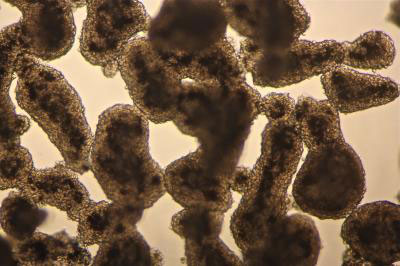| Posted: Mar 31, 2010 | |
Bio-assembler uses magnetic levitation to assemble 3-D cell cultures |
|
| (Nanowerk Spotlight) Mass culture of cell lines – the process by which cells are grown under controlled conditions – has long been fundamental to the manufacture of viral vaccines and many products of biotechnology. More recently it also has become an essential tool in stem cell research and tissue engineering. Most conventional petri dish based cell culture techniques produce monolayers cell growth that is missing essential cellular functions that are present in living organisms; gene expression, signaling and morphology can be different and this compromises its clinical relevance. It limits their potential to predict the cellular responses of real organisms. One major impact of cell cultures that more closely resemble native tissue will be better results for preclinical drug tests. | |
| In order to develop cellular models that mimic the functions of living tissues, researchers have therefore been trying to move from two-dimensional to three-dimensional (3D) cultures. A recent example is a technique that uses magnetic levitation of cells in the presence of a hydrogel consisting of gold, magnetic iron oxide nanoparticles and filamentous bacteriophage. By spatially controlling the magnetic field while cells divide and grow, the geometry of the cell mass can be manipulated, and multicellular clustering of different cell types in co-culture can be achieved. | |
| This 3-D technique is easy enough for most labs to set up immediately. Compared with cell cultures grown on flat surfaces, the 3-D cell cultures tend to form tissues that more closely resemble those inside the body. | |
 |
|
| A 3-D cell culture grown with magnetic levitation. (Source: G. Souza/N3D Biosciences) | |
| The magnetic levitation technology provides an alternative to biodegradable porous scaffolds and protein matrices. The researchers, led by Wadih Arap and Renata Pasqualini at The University of Texas M. D. Anderson Cancer Center and Tom Killian at Rice University, explain that biodegradable scaffolds usually may suffer from slow or delayed propagation of cells and establishment of cell–cell interactions. "Existing commercial products are useful and not particularly expensive, but their chemical composition is fixed (that is, unchangeable). In contrast, our bio-assembler allows adaptable magnetic-based cell levitation and may provide for improved three-dimensional cell-growth conditions in certain settings. The methodology is cost-effective, because it does not require a specific medium, and it is compatible with standard two-dimensional cell culture techniques." | |
| To make cells levitate, the research team added magnetic nanoparticles to a gel that contains phage. When cells are added to the gel, the phage causes the particles to be absorbed into cells over a few hours. The gel is then washed away, and the nanoparticle-loaded cells are placed in a petri dish filled with a liquid that promotes cell growth and division. By placing a coin-sized magnet atop the dish's lid, cells could be lifted off the bottom of the dish – now the researchers could concentrate them and allow them to grow and divide while they were suspended in the liquid. | |
| To explore the biological attributes afforded by magnetic levitation in their system, the team cultured human glioblastoma cells and observed not only morphological but also molecular similarity to orthotopic human tumor xenografts from immunodeficient mice. This suggests that magnetic levitation may recapitulate at least some in vivo-like traits. | |
| Making this magnetic levitation technique even more attractive, the method does not require a specific medium, engineered scaffolds, matrices or molded gels. | |
| "A logical next step for us will be to use this additional magnetic property in targeted ways to explore possible applications in the imaging and treatment of tumors," says Arap. | |
| The 3-D modeling raises another interesting long-term possibility. "This is a step toward building better models of organs in the lab," says Pasqualini. | |
| The researchers have reported their findings in a recent edition of Nature Nanotechnology ("Three-dimensional tissue culture based on magnetic cell levitation") | |
 By
Michael
Berger
– Michael is author of three books by the Royal Society of Chemistry:
Nano-Society: Pushing the Boundaries of Technology,
Nanotechnology: The Future is Tiny, and
Nanoengineering: The Skills and Tools Making Technology Invisible
Copyright ©
Nanowerk LLC
By
Michael
Berger
– Michael is author of three books by the Royal Society of Chemistry:
Nano-Society: Pushing the Boundaries of Technology,
Nanotechnology: The Future is Tiny, and
Nanoengineering: The Skills and Tools Making Technology Invisible
Copyright ©
Nanowerk LLC
|
|
|
Become a Spotlight guest author! Join our large and growing group of guest contributors. Have you just published a scientific paper or have other exciting developments to share with the nanotechnology community? Here is how to publish on nanowerk.com. |
|
